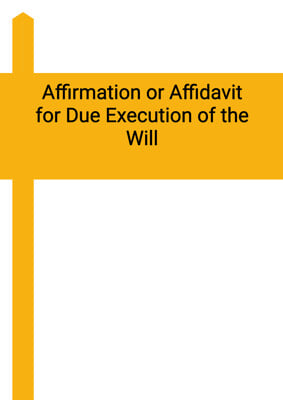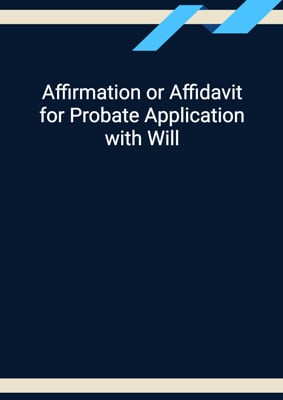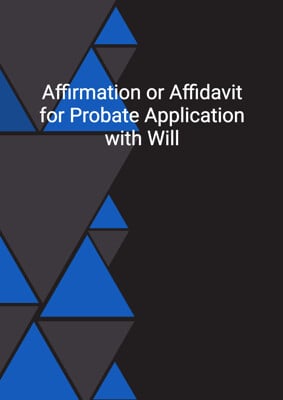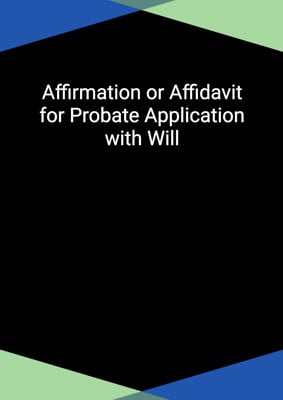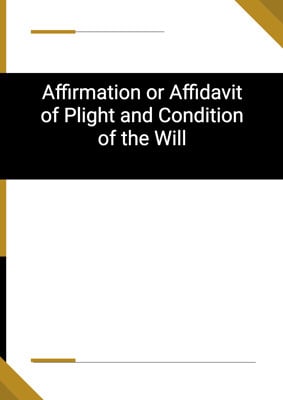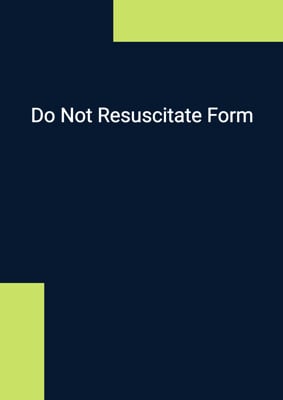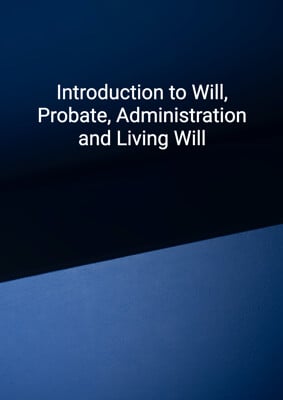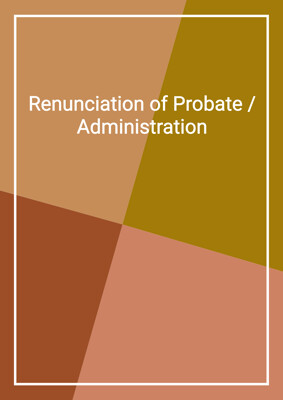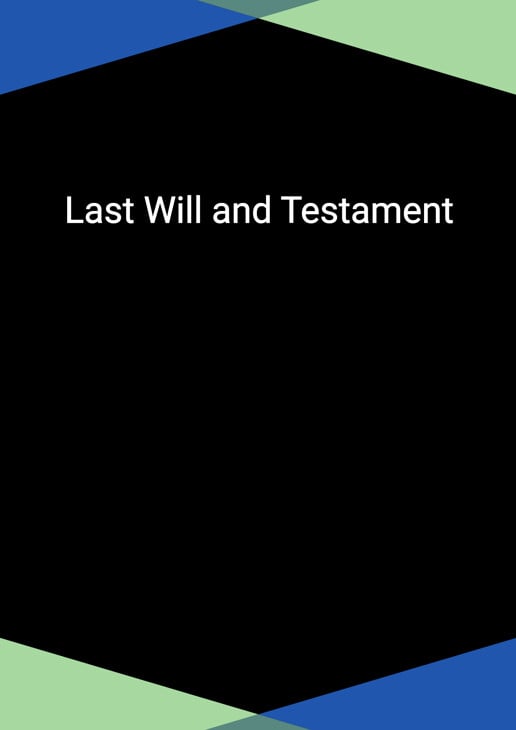
Last Will and Testament
Married Couple with No Children
Sample last will and testament for married couple. Last Will and Testament made by a married individual with a spouse but no children. Give everything to the spouse but if the spouse died first, give everything to designated charity / in accordance with the laws of intestacy. The Will must be executed as a deed in front of 2 witnesses.
How to Tailor the Document for Your Need?
01
Create Document
Click "Create Document" button and the document will be prepared with your account details automatically filled in.
02
Fill Information
Please fill in any additional information by following the step-by-step guide on the left hand side of the preview document and click the "Next" button.
03
Get Document
When you are done, click the "Get Document" button and you can download the document in Word or PDF format.
04
Review Document
Please review the document carefully and make any final modifications to ensure that the details are correct before publication / distribution.
Document Preview
Document Description
The Last Will and Testament document is a legal document that reflects the personal wishes of the testator without any undue influence. It revokes all former wills and testamentary dispositions made by the testator. The document consists of several sections that provide detailed information.
1. Personal Background: This section provides information about the testator's personal background. It includes details such as the testator's date of birth and marital status. If the testator is married, divorced, in a de facto relationship, or separated, it is clearly stated.
2. Executor and Trustee Appointment: This section appoints the testator's spouse as the executor and trustee of the will. It also specifies the order of priority for alternate executors and trustees. The executor and trustee are granted powers to carry out all provisions of the will, including the simplified handling of estates and holding in trust the share of any minor beneficiary. The section also clarifies that the executor and trustee are not required to post a bond.
3. Beneficiaries & Bequests: This section outlines the distribution of the testator's property after the payment of debts, obligations, expenses, and liabilities. It includes specific bequests, personal property, real property, business/shares (if applicable), and the residuary estate. If all beneficiaries are deceased before full distribution, the section specifies the distribution to charity or heirs determined by the laws of intestate succession.
4. Request: This section includes any specific requests made by the testator upon their death. It may include religious services, preferences for the disposition of the body, or any other specific requests.
The document concludes with the testator's signature, the attesting witnesses' signatures, and the date and place of execution.
How to use this document?
To use the Last Will and Testament document, follow these steps:
1. Personal Background: Provide accurate information about your personal background, including your date of birth and marital status.
2. Executor and Trustee Appointment: Appoint your spouse as the executor and trustee of your will. If your spouse is unavailable, unable, or unwilling to serve, specify alternate executors and trustees in order of priority. Ensure that the appointed executor and trustee have the necessary powers to carry out all provisions of the will. They should also be aware of the simplified handling of estates and the option to hold in trust the share of any minor beneficiary.
3. Beneficiaries & Bequests: Determine the distribution of your property after the payment of debts, obligations, expenses, and liabilities. Specify any specific bequests, personal property, real property, and business/shares (if applicable). If all beneficiaries are deceased before full distribution, decide whether the remaining portion of your estate will be distributed to charity or heirs determined by the laws of intestate succession.
4. Request: Make any specific requests regarding your funeral, disposition of your body, or other preferences. Ensure that your requests are clearly stated.
5. Signature and Witnesses: Sign the Last Will and Testament document in the presence of two witnesses. The witnesses should also sign the document, acknowledging that they witnessed your signature. Include the date and place of execution.
It is important to consult with a legal professional to ensure that your Last Will and Testament document complies with the laws and regulations of your jurisdiction.
Not the right document?
Don’t worry, we have thousands of documents for you to choose from:


